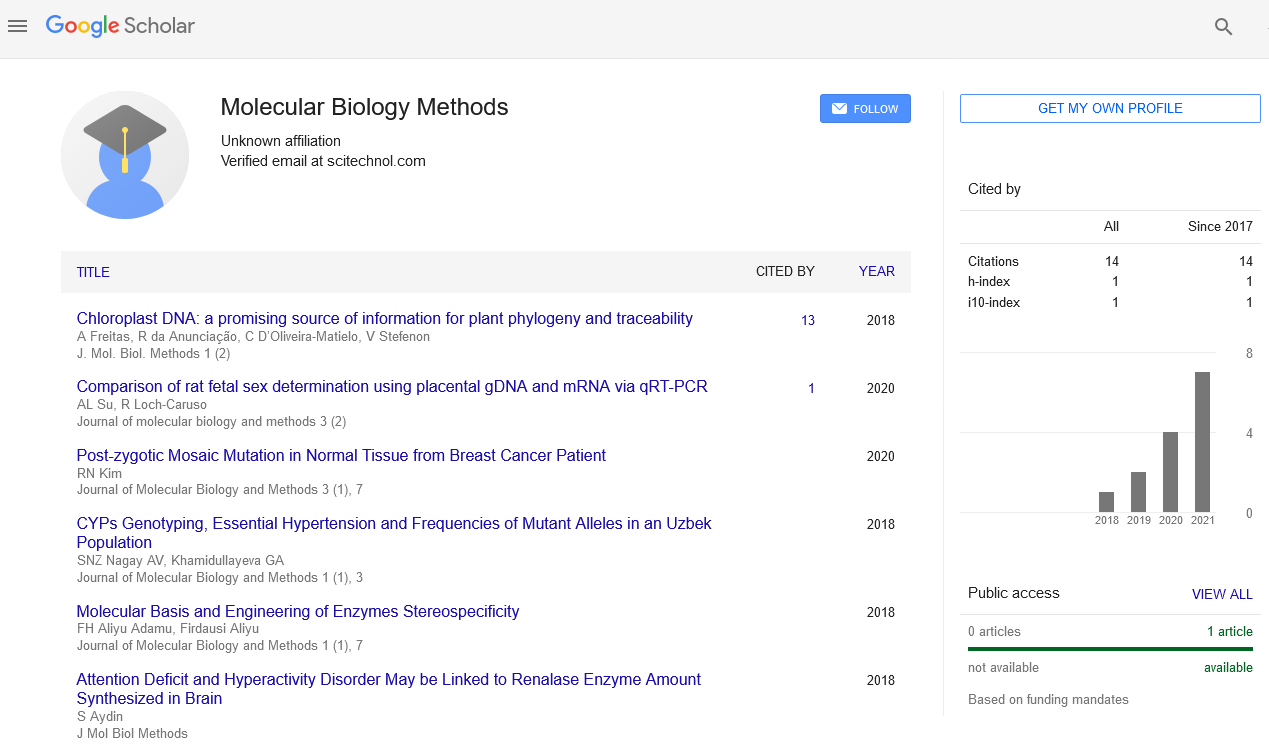Short Communication, J Mol Biol Methods Vol: 6 Issue: 1
Tumor Heterogeneity: Unravelling the Complexity of Cancer Biology
Samuel Lin*
Department of Medicine, Columbia University, New York, United States of America
*Corresponding Author: Samuel Lin
Samuel Lin, Department of Medicine, Columbia University, New York, United States of America;
E-mail: samuellin@mcu.edu
Received date: 20 February, 2023, Manuscript No. JMBM-23-94756;
Editor assigned date: 22 February, 2023, PreQC No. JMBM-23-94756 (PQ);
Reviewed date: 09 March, 2023, QC No JMBM-23-94756;
Revised date: 16 March,2023, Manuscript No. JMBM-23-94756 (R);
Published date: 23 March, 2023, DOI: 10.4172/JMBM.1000130
Citation: Lin S (2023) Tumor Heterogeneity: Unravelling the Complexity of Cancer Biology. J Mol Biol Methods 6:1.
Abstract
Description
Cancer, a multifaceted disease that affects millions of lives worldwide, has been a topic of extensive study for decades. Among the many mysteries that cancer presents, tumor heterogeneity has emerged as a prominent area of investigation, shedding light on the complexity of cancer biology [1]. Tumor heterogeneity refers to the presence of diverse cell populations with distinct genetic, epigenetic, and phenotypic characteristics within a single tumor mass. This phenomenon challenges the traditional view of cancer as a uniform entity and has significant implications for cancer diagnosis, treatment, and prognosis. Tumor heterogeneity can arise from various sources, including genetic mutations, epigenetic modifications, clonal evolution, and micro-environmental influences. Genetic mutations can result in different sub-clones of tumor cells with distinct genetic alterations, leading to cellular diversity within a tumor [2,3]. Epigenetic modifications, such as DNA methylation and histone modifications, can also contribute to tumor heterogeneity by regulating gene expression patterns differently in different tumor cells. Clonal evolution, driven by the accumulation of genetic and epigenetic changes over time, can result in the emergence of subpopulations of tumor cells with distinct phenotypes [4]. Additionally, the tumor microenvironment, which includes the surrounding blood vessels, immune cells, and stromal cells, can play a role in shaping tumor heterogeneity by developing different niches that support the growth and survival of diverse tumor cell populations. The implications of tumor heterogeneity are far-reaching and have significant clinical implications. Firstly, tumor heterogeneity can affect cancer diagnosis and prognosis [5,6]. Traditional diagnostic methods, such as biopsies, may not accurately represent the overall genetic makeup of a tumor due to the presence of genetically diverse sub-clones. This can result in incomplete or inaccurate information about the tumors characteristics, leading to suboptimal treatment decisions [7]. Moreover, the presence of distinct tumor cell populations with different phenotypes, including drug-resistant sub-clones, can complicate treatment strategies and contribute to treatment failure and disease recurrence.
Secondly, tumor heterogeneity can impact cancer treatment outcomes. Different sub-clones within a tumor may respond differently to various treatments, making it challenging to effectively target all the cells within the tumor mass. For example, a treatment that targets a specific genetic mutation may effectively eliminate cells with that mutation, but not cells without it, resulting in residual disease [8,9]. Furthermore, the dynamic nature of tumor heterogeneity, with clonal evolution and micro-environmental changes occurring over time, can contribute to the development of drug resistance and treatment failure [10]. Therefore, understanding and addressing tumor heterogeneity is essential for developing effective and personalized cancer therapies. Imaging techniques, such as Magnetic Resonance Imaging (MRI), Computed Tomography (CT), and Positron Emission Tomography (PET), can also provide valuable information about the spatial distribution of different tumor cell populations and the tumor microenvironment. Despite its challenges, tumor heterogeneity also presents opportunities for advancing cancer analysis and treatment [11]. Recent advancements in technologies, such as single-cell sequencing, allow characterizing the genetic, epigenetic, and phenotypic diversity within tumors. This has led to a deeper understanding of tumor heterogeneity and its implications for cancer biology. Furthermore, the concept of tumor heterogeneity has spurred the development of innovative treatment approaches, such as combination therapies that target multiple sub-clones within a tumor, or therapies that aim to disrupt the tumor microenvironment to reduce its supportive effects on different tumor cell populations.
Conclusion
Tumor heterogeneity is a complex and dynamic phenomenon that challenges the traditional understanding of cancer as a uniform entity. It has significant implications for cancer diagnosis, treatment, and prognosis. While it presents challenges in the clinical management of cancer, it also offers opportunities for advancing cancer treatment. Understanding the mechanisms driving tumor heterogeneity, such as genetic mutations, epigenetic modifications, clonal evolution, and micro-environmental influences, is important for accurate diagnosis and personalized treatment strategies.
References
- Marusyk A, Polyak K (2010) Tumor heterogeneity: causes and consequences. Biochim Biophys Acta Rev Cancer 1805(1):105-17.
- Alizadeh AA, Aranda V, Bardelli A, Blanpain C, Bock C et al (2015) Toward understanding and exploiting tumor heterogeneity. Nat Med 21(8):846-53.
- Heppner GH, Miller BE (1983) Tumor heterogeneity: biological implications and therapeutic consequences. Cancer Metastasis Rev 2:5-23.
- Pe'er D, Ogawa S, Elhanani O, Keren L, Oliver TG (2021) Tumor heterogeneity. Cancer cell 39(8):1015-7.
- Shipitsin M, Campbell LL, Argani P, Weremowicz S, Bloushtain-Qimron N ET AL (2007) Molecular definition of breast tumor heterogeneity. Cancer cell 11(3):259-73.
- Davnall F, Yip CS, Ljungqvist G, Selmi M, Ng F et al (2012) Assessment of tumor heterogeneity: an emerging imaging tool for clinical practice?. Insights Imaging. 3:573-89.
- Stanta G, Bonin S (2018) Overview on clinical relevance of intra-tumor heterogeneity. Front Med 5:85.
- Terreno E, Castelli DD, Viale A, Aime S et al (2010) Challenges for molecular magnetic resonance imaging. Chem Rev 110(5):3019-42.
- Larkman DJ, Nunes RG (2007) Parallel magnetic resonance imaging. Phys Med Biol 52(7):R15.
- Hahn WC, Weinberg RA (2002) Rules for making human tumor cells. N Engl J Med 347(20):1593-603.
- Brooks SL (1993 ) Computed tomography. Dent Clin North Am. 37(4):575-90.
 Spanish
Spanish  Chinese
Chinese  Russian
Russian  German
German  French
French  Japanese
Japanese  Portuguese
Portuguese  Hindi
Hindi 